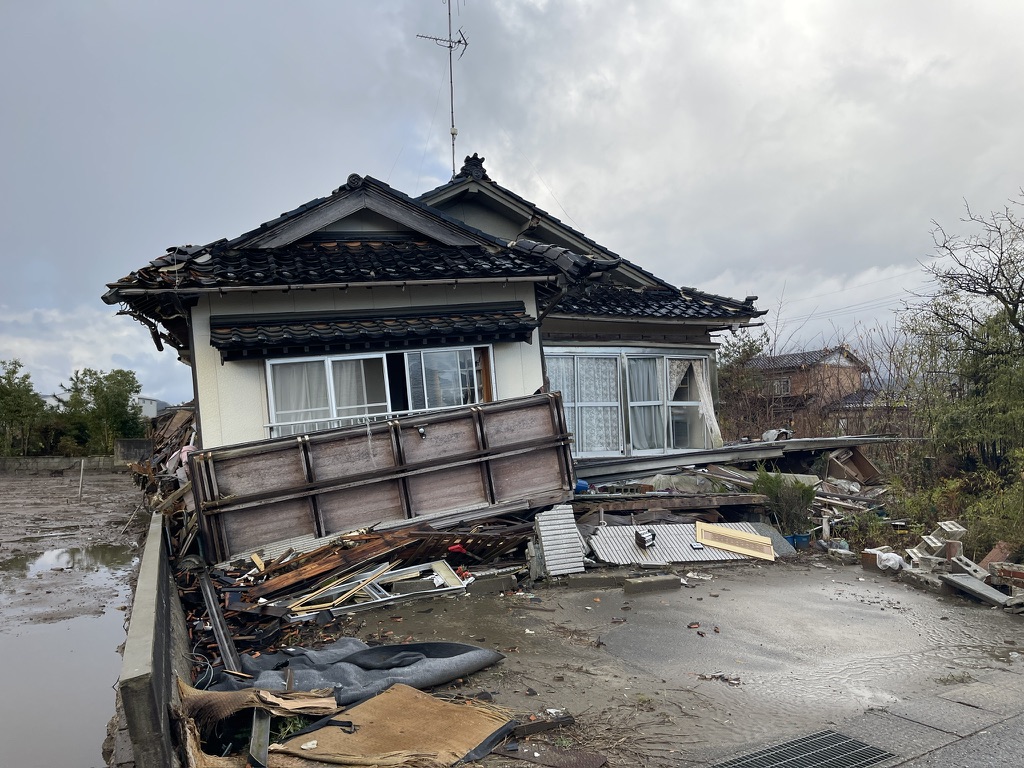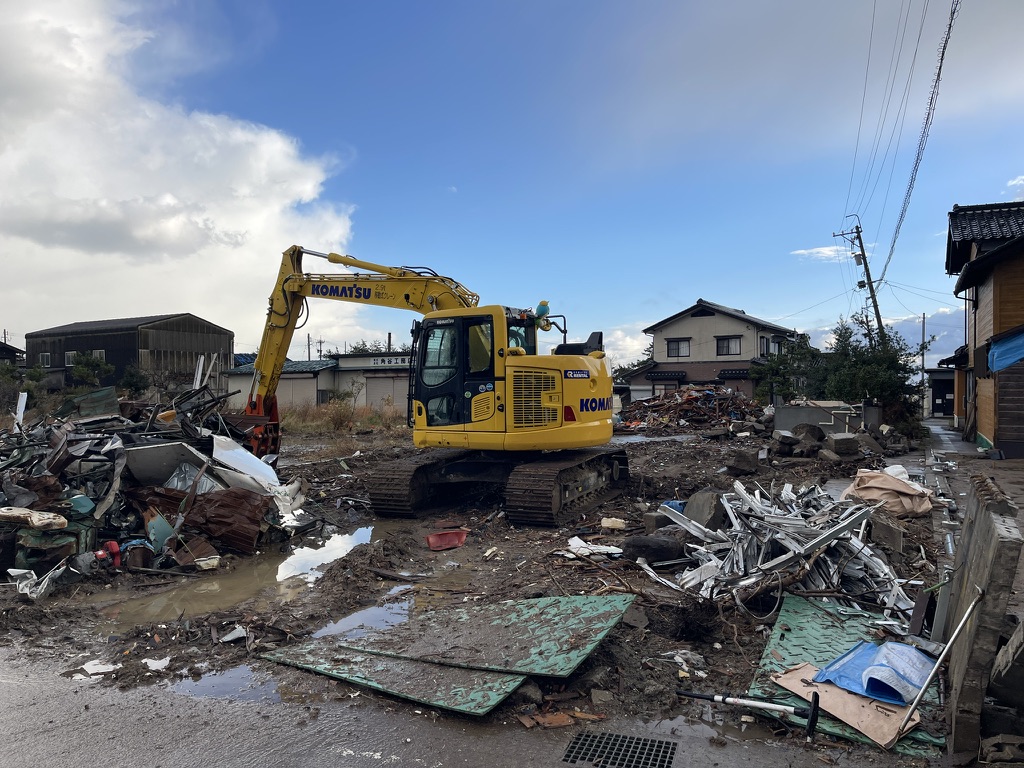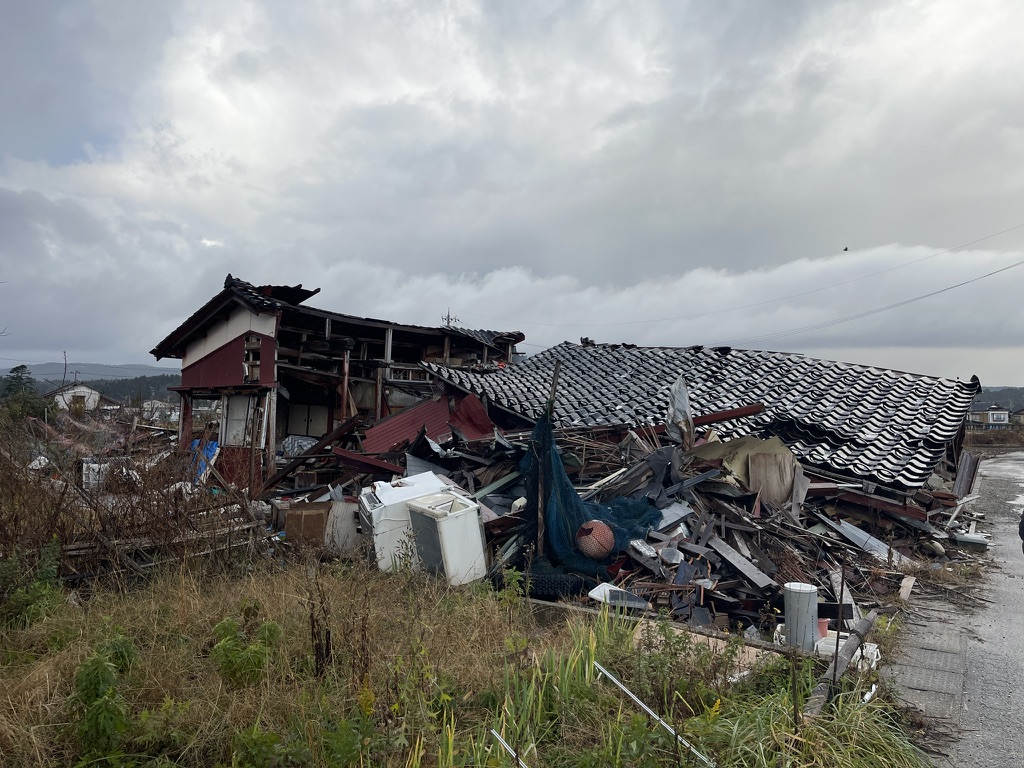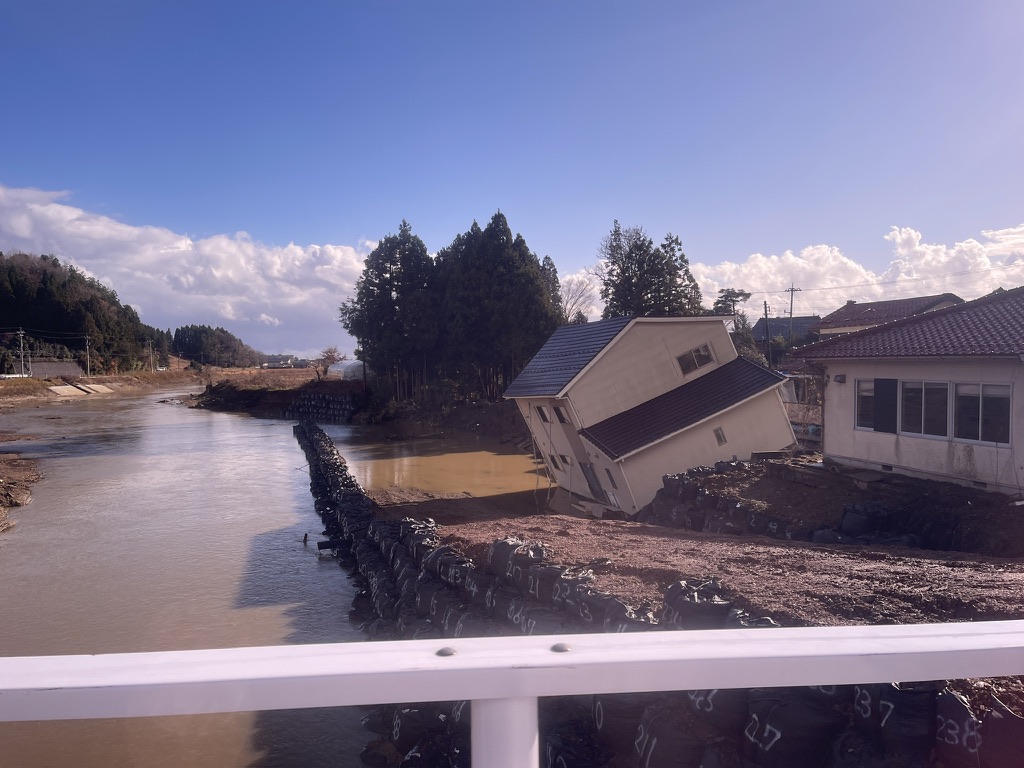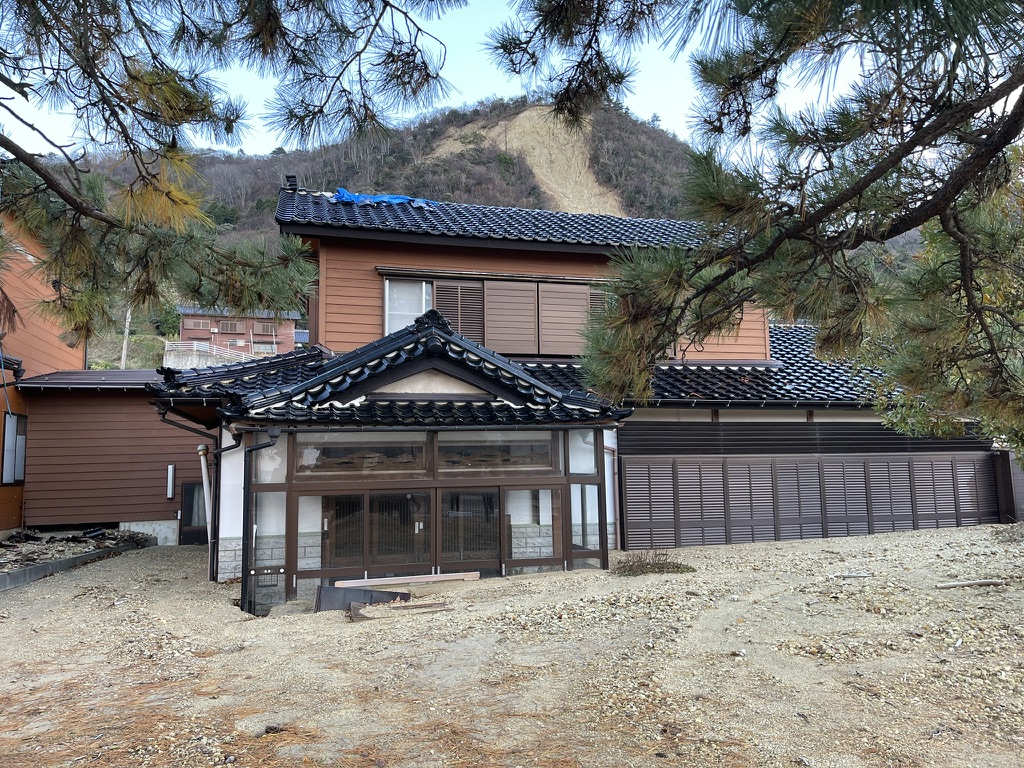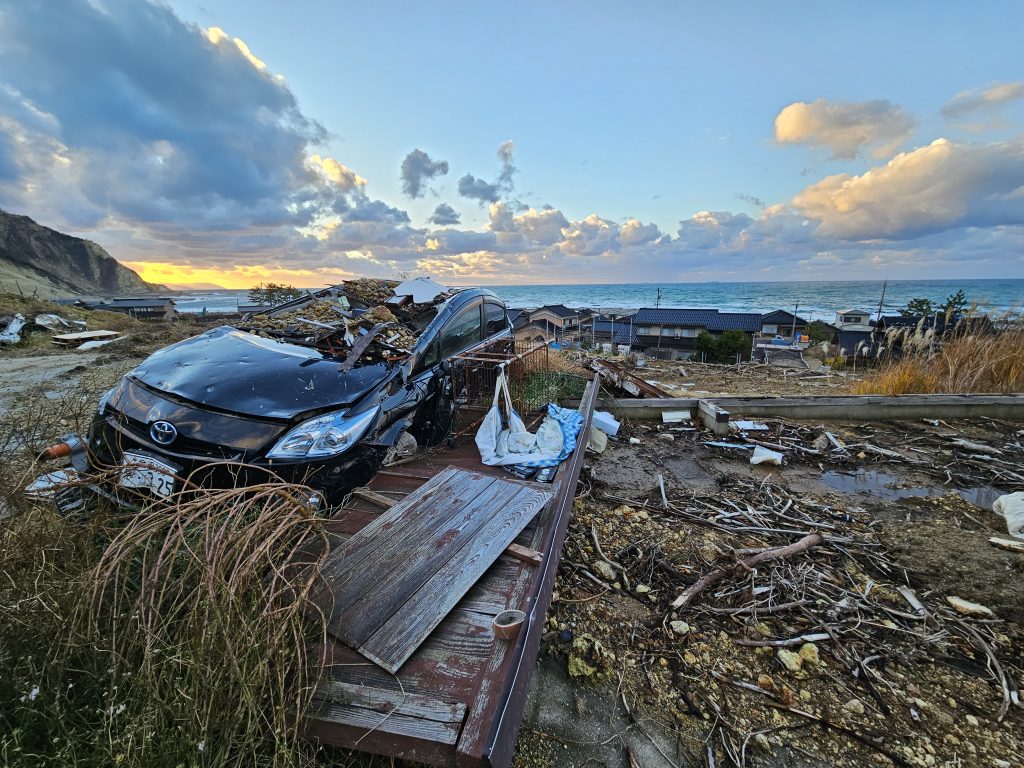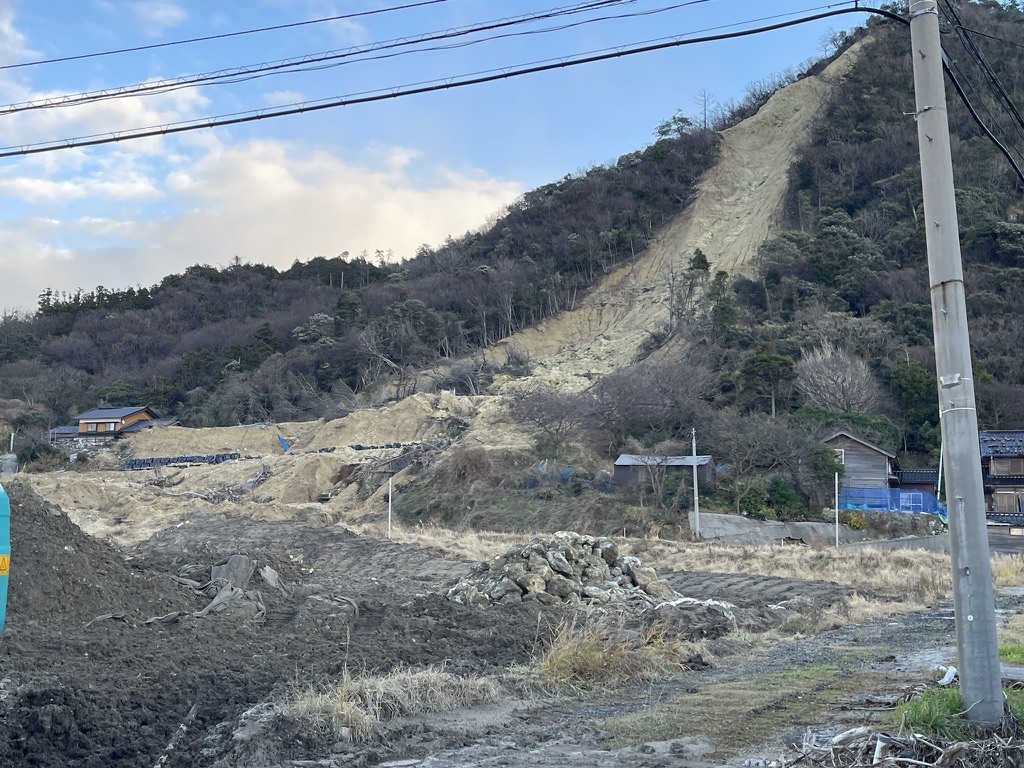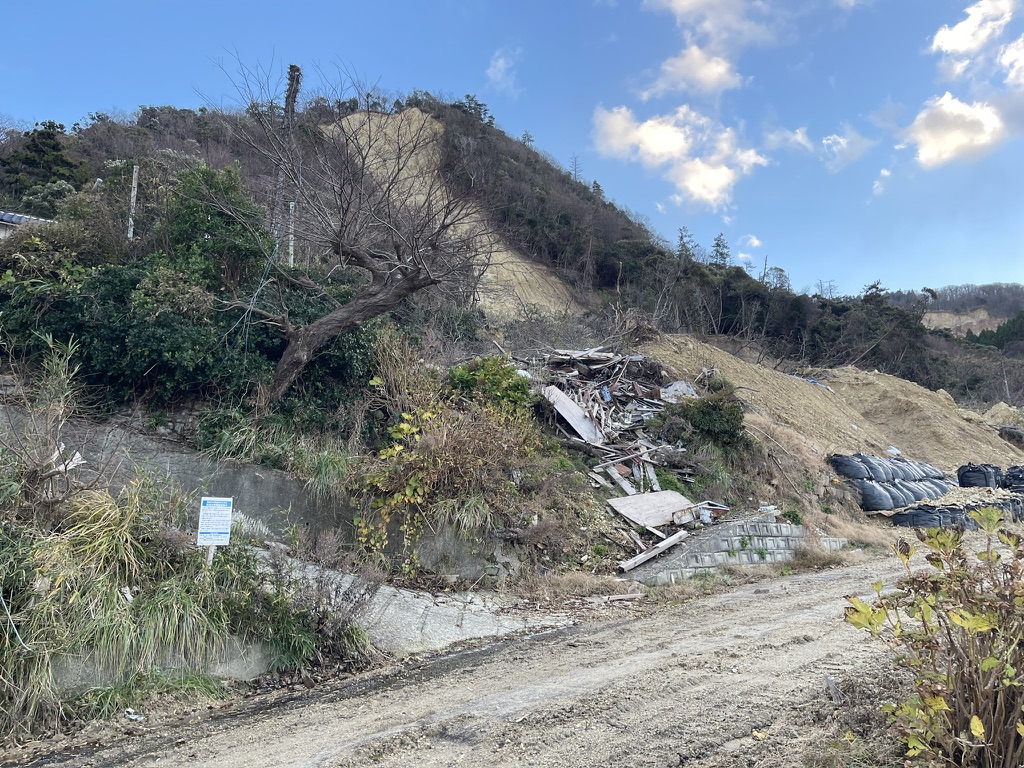Earthquake Recovery on Japan’s Noto Peninsula: One Year Later
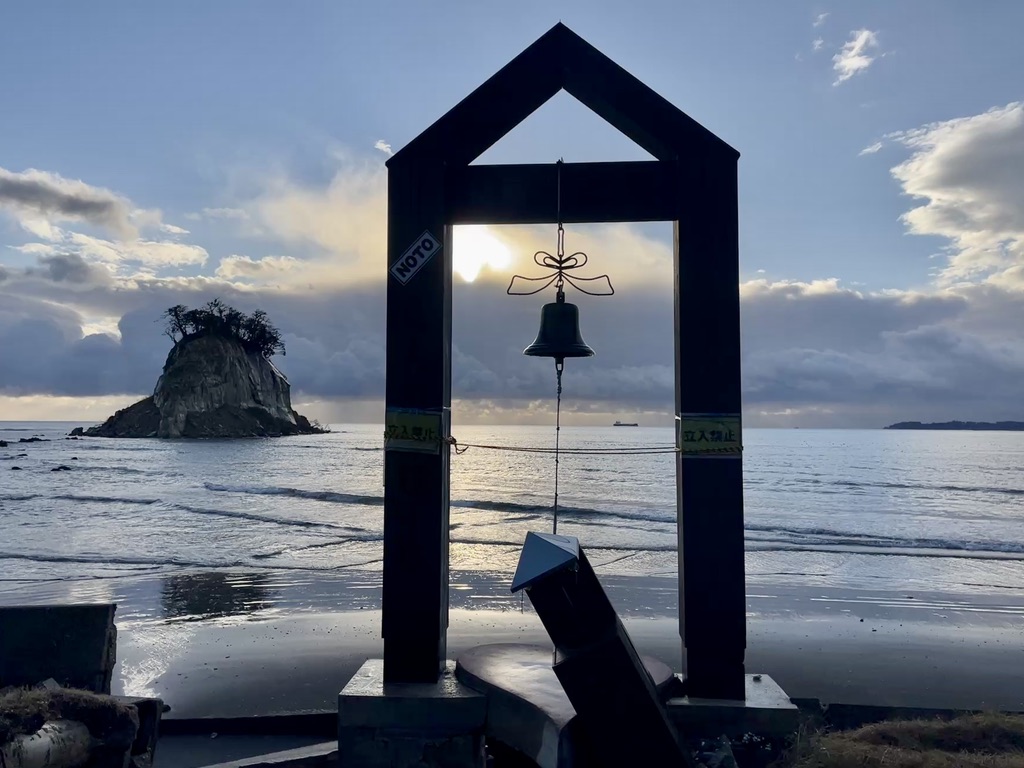
New Year’s Day marks one year since a 7.6 magnitude earthquake devastated Japan’s Noto Peninsula. More than 400 people have died as a result of the disaster, and nearly 30,000 people were forced to seek shelter in evacuation centers and elsewhere. Making the situation more difficult, in September 2024, the Noto Peninsula was struck by torrential rains that caused severe flooding and mudslides, killing 15 more people. The new disaster came as a major setback in the recovery process, destroying homes and infrastructure just as the majority of residents had transitioned into short-term housing.
Immediately after the earthquake, a team of Peace Winds doctors, nurses, and other disaster professionals set out for the Noto Peninsula, and they were soon joined by three helicopters, a ship, and two rescue dogs. Responders immediately began search-and-rescue activities and set up emergency medical clinics for evacuees. Peace Winds teams played a key role throughout the initial rescue and relief stage. This included providing medical care, food, purified water, and emergency supplies, as well as coordinating evacuation center operations. Now, one year later, a permanent Peace Winds team remains on the ground in Suzu to meet the needs of survivors on the eastern half of the peninsula.
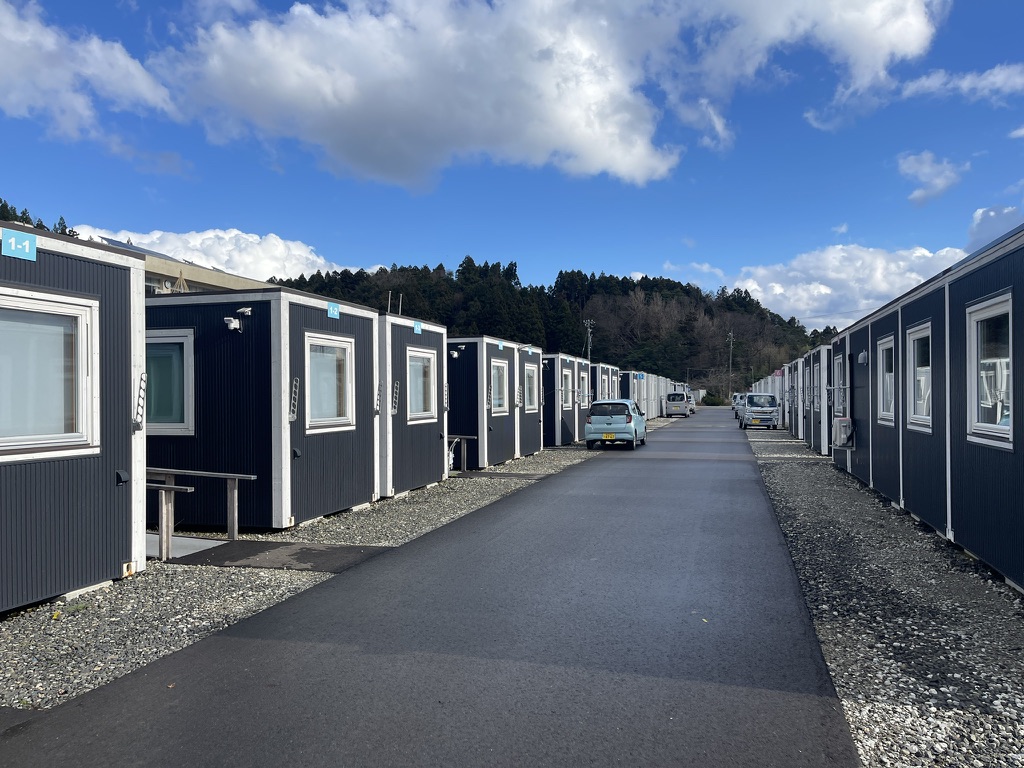
The majority of survivors have now moved from evacuation centers into cramped temporary housing units. While long-term recovery is well underway, the process of rebuilding over the last year has been slow. Much of the debris has been cleared from lots and roadsides, but other homes and neighborhoods look as if they haven’t been touched since the earthquake. Suzu City officials say the cost to rebuild homes is much higher than anyone anticipated due to labor shortages in Noto and the skyrocketing cost of materials. Roughly 500 households are still without running water, and many residents continue to carry debt from their homes that were destroyed.
Damaged and destroyed homes in Noto (December 2024)
More than half of the 11,000 people who lived in the Oku-Noto area before the earthquake have left since the disaster, with few planning to return. Plus, more than 50% of the residents are elderly. This fact presented unique challenges in the early days of the response, and it continues to make recovery difficult.
On the other hand, there is a strong sense of community and loyalty to Noto among those who remain. Peace Winds staff and volunteers have built strong personal relationships by regularly checking in on elderly residents who remain in their homes. Peace Winds helps them with disaster case management, including arranging repairs to their damaged homes, reconnecting their homes to water lines, and navigating legal and financial matters. This kind of assistance is especially important for elderly residents, some of whom have cognitive decline. Despite the situation, the resolve of these residents is remarkable; one retired carpenter in his 70s is rebuilding and repairing his partially-destroyed home on his own, and he says it has given him a new sense of purpose.
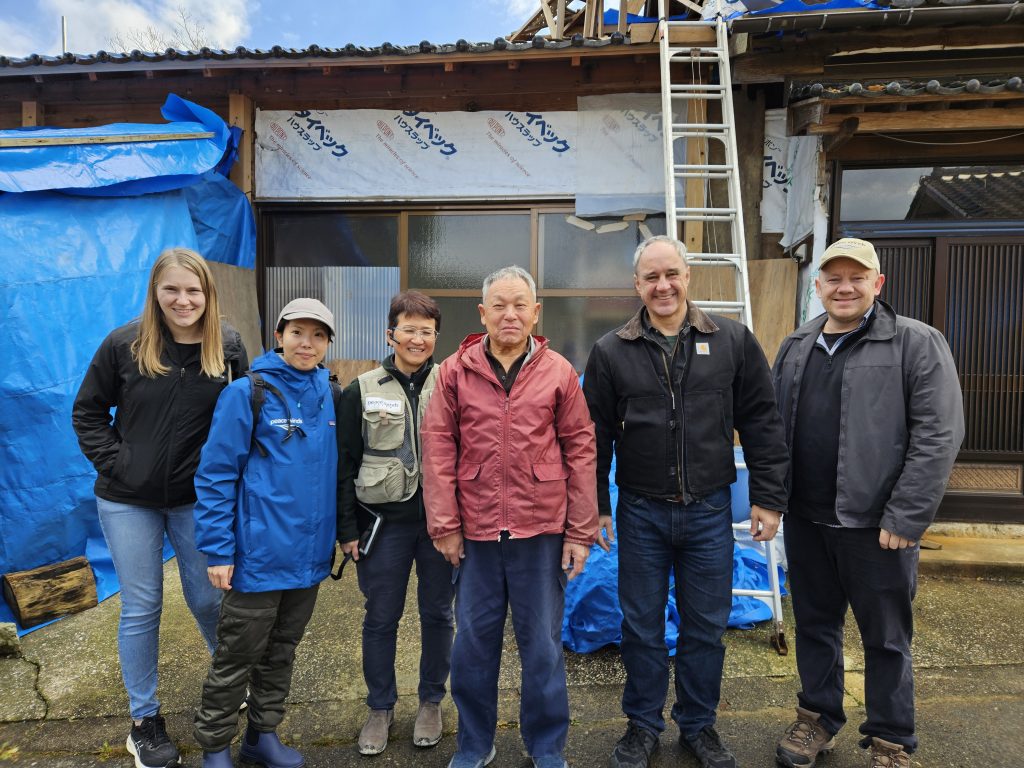
For the next six months, Peace Winds will be carrying out wellness checks at vulnerable individuals’ homes. The visits are organized in coordination with the local social welfare councils and doctors at Suzu City General Hospital, and they aim to mitigate physical and mental health ailments. Peace Winds nurses perform regular health checks and ask evacuees questions such as whether they are getting enough sleep, whether they attend necessary medical appointments for chronic conditions, or how they are feeling about the situation overall. These visits also allow us to identify residents who need help on various tasks–whether cleaning up debris, having groceries or medications delivered, or minor home repairs–and we then assign staff or volunteers to follow up.
Peace Winds is also fostering community ties and supporting the psychosocial wellbeing of senior citizens and children who have lost their homes through community events. Events include tea/coffee hours and crafts classes, which help elderly evacuees get to know their neighbors. Activities also include recreational and educational outings for area children.
Finally, as evacuees continue the transition into temporary housing provided by the local government, they are responsible for furnishing their own housing units. Peace Winds is supporting the transition by providing a basic set of standard appliances (microwave, toaster oven, AC/heater, etc.) to all evacuees who are moving into temporary housing on the northeastern side of the peninsula.
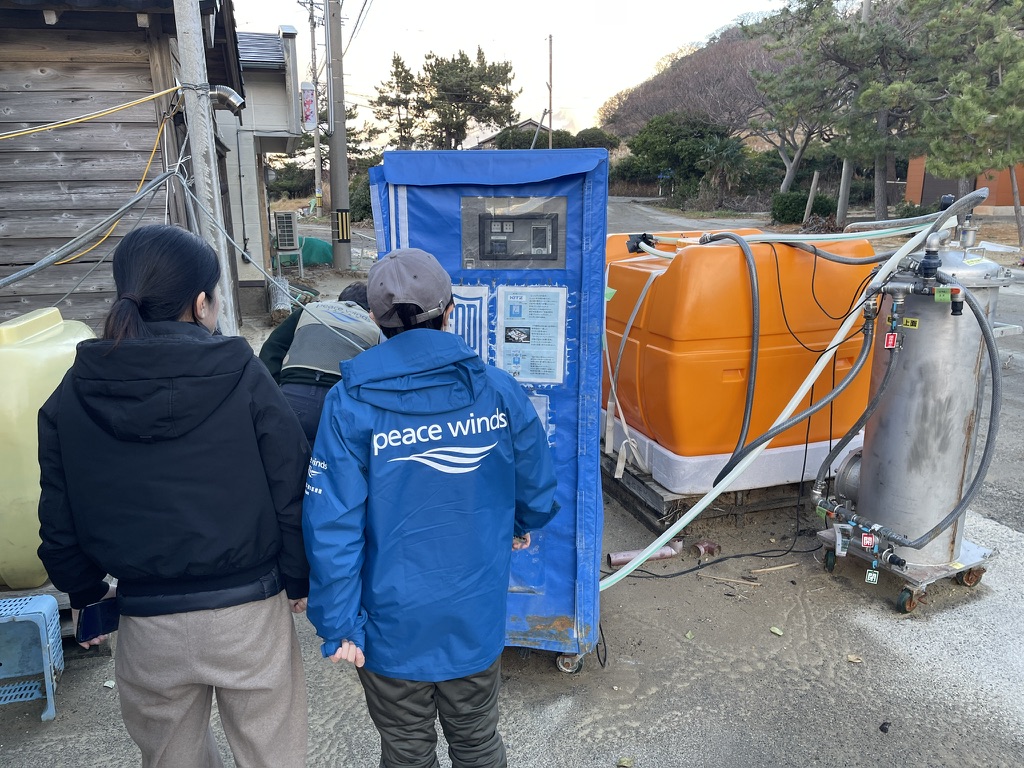
It will take years for Noto residents to return to their “normal” lives, but we are so grateful for your support which has allowed us to carry out relief and recovery activities for the last year. Peace Winds staff will remain in Suzu to continue to support long-term recovery. If you have not yet made a donation to support our work in Noto and would like to do so, please visit our GlobalGiving page here. We are deeply grateful for your continued support.
Home buried by September mudslide; mudslide & earthquake damage (December 2024)
